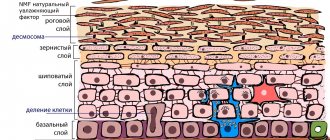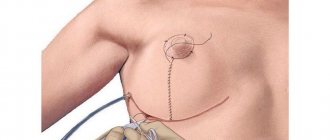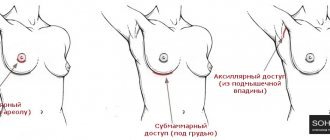← Plastic surgery and cosmetologyLeave a review
Do you feel like your breasts are too small or do you feel uncomfortable when wearing a bikini or tight-fitting clothes? The methods of breast surgery that exist today make it possible to realize almost any desire of the patient to change the shape of the breast:
— mammoplasty (breast augmentation) — mastopexy (breast lift) — reduction (breast reduction)
Breast correction operations are in first place in demand among patients.
Sign upSee prices
Mammoplasty.
By changing the size and/or shape of the mammary glands using implants, mammoplasty can solve various problems. In addition to increasing volume, you can eliminate asymmetry, shape the neckline, and lift the breasts.
Mammoplasty is recommended in the following cases:
- Naturally small breast size (micromastia).
- Prolapse, a decrease in the volume of the mammary glands (usually caused by childbirth and breastfeeding).
- Breast asymmetry, unusual nipple position.
- Reconstructive procedure after surgery to remove a tumor in the mammary gland.
Implants.
Progress in medical research has allowed the latest generations of breast implants to achieve sufficient safety and durability of use. Implants are divided by shape, texture, filler, size, and manufacturer.
An important criterion that actually determines the appearance of the future breast is the shape of the endoprosthesis. Currently, two forms of implants are used: round and anatomical. Anatomical implants are teardrop-shaped and actually follow the natural shape of the breast. They are well suited for ladies with initially flat chests. But they limit the use of bras with a lifting effect, they are more difficult to implant, and more often move during use, which leads to deformation of the breast shape; are more expensive.
Round implants are spherical in shape: they provide maximum volume, lift the breasts, are technically easier to implant, and are relatively cheap. They are chosen for asymmetry of the mammary glands, ptosis of the breast tissue, or if you want to acquire a larger breast size.
The surface of the endoprosthesis can be smooth or textured. A textured implant has a rough surface due to the presence of micropores. This surface allows connective tissue cells to fill the voids and securely fix the implant. Most plastic surgeons recommend using a textured implant.
The breast implant filler can be saline or silicone gel.
Gel as a filler is used primarily to create a natural feel when touching the breast after mammoplasty.
In any case, preference should be given to silicone fillers with a textured surface.
The size of the implant, its shape, and manufacturer are selected during a free consultation with a plastic surgeon, depending on your desire, anatomical structure and material wealth.
Implants do not interfere with breastfeeding and their contents do not pass into breast milk.
The main advantages of modern implants:
- Imitation of natural female breasts when viewed at rest and during changes in body position.
- Feelings of natural breasts when touched.
- Resistance to mechanical stress.
- Sterility.
- Biocompatibility with tissues of the human body (extremely rarely causes rejection).
- Safety of filler in case of damage to the implant wall.
How is breast augmentation surgery performed?
The operation is performed under general anesthesia and lasts, depending on the complexity, two to three hours.
During the operation, the surgeon makes an incision, moves the tissue apart, creates a “pocket” between the gland and the chest and inserts an implant into it. The prosthesis can be located under the pectoral muscle or under the mammary gland.
The doctor himself decides where it is best to place the implant. The incision is made in one of the selected locations: either in the crease under the breast (submammary approach), or around the areola (periareolar approach), or in the armpit (axillary approach).
Submammary access.
It is most convenient for the doctor to make an incision under the breast. The incision is made in the natural crease under the breast. This method is good because the mammary tissue is not injured.
Periareolar access.
The incision is made along the lower edge of (or around) the areola, at the border of pigmented and unpainted skin, which allows the postoperative scar to become almost invisible after some time. With this incision, any type of breast implant can be used, either under the muscle or under the mammary gland. This access allows the surgeon to simultaneously perform areoloplasty, mastopexy, and eliminate asymmetry or ptosis of the mammary glands. With the periareolar approach, there may be a risk of changes in nipple sensitivity, which in most cases recovers over time. If the operation is performed correctly, the mammary glands are not injured. However, since there is a risk of damage to the mammary glands, there is a possibility of problems with breastfeeding.
Axillary access.
The incision is located in the armpit area. Installing an implant through this approach does not injure the mammary gland. For the surgeon, this is the most inconvenient method and is used most often using endoscopic techniques and requires great skill. A serious contraindication is the asymmetry of the mammary glands and the need to shift the inframammary fold.
Postoperative period.
After a short hospital stay (usually one day), the patient returns home. The doctor sets appointment dates for examination and dressings. The first time after surgery, there may be swelling, a feeling of heaviness, tightness, and pain. These phenomena are temporary and soon pass. The sutures are removed 1-2 weeks after surgery, and swelling of the soft tissues will subside within four to five weeks. During this period, wearing special compression garments is mandatory. 1.5 months after surgery, physical activity in the gym is allowed. Avoid exposing scars to direct sunlight.
Final result.
Noticeable changes are observed already on the first day, despite the fact that the final shape of your breasts can only be objectively assessed after six months. It is important that your expectations are realistic.
Preparation for surgery:
- Undergo preoperative examination.
- 2-3 days before surgery, stop taking medications containing aspirin and alcohol.
- Stop playing sports 2-3 days before surgery.
- Avoid hormonal contraceptives.
- The operation is performed on an empty stomach. The last meal and liquid intake should be no later than 8 hours before surgery.
- The operation is not performed during menstruation, during periods of exacerbation of chronic and acute respiratory viral diseases.
Contraindications:
- Oncological diseases, blood diseases, infectious diseases, severe diseases of internal organs.
- Cardiovascular diseases.
- During pregnancy and breastfeeding.
- Diabetes.
- Mental illness.
- Skin tendency to form keloid scars.
- Age less than 18 years.
Carrying out the operation
The essence of the operation is that the plastic surgeon makes an incision of no more than 4 cm in the area of the submammary fold, dissection of the tissue, and a “pocket” is formed for the position of the implant. Using a special surgical sleeve, the implant is placed into the formed “pocket” using a low-traumatic method. The edges of the implant cannot be felt, and the result looks natural and natural. Both round and anatomical implants can be installed using the submammary approach. The sutures are treated with special fibrin glue, prepared from the patient’s own blood, and the sutures are applied with cosmetic self-absorbable threads. Additionally, the seam is sealed with skin glue, which works as an additional antiseptic sealant.
Mastopexy.
Due to age-related changes, sudden weight loss, and after childbirth, breasts may lose shape. In this case, the mammary gland descends, and asymmetry often occurs. The nipple also descends lower than the inframammary fold (the fold under the breast). This phenomenon is called "ptosis". Breast lift surgery is designed to solve this problem.
How is breast lift surgery performed?
A breast lift is performed under general anesthesia and lasts on average from 2.5 to 4 hours. During the operation, excess skin is excised, and the breast tissue is fixed in a higher position. At the same time, the volume of the mammary gland is completely preserved, and its contours are significantly improved.
If asymmetry is present, minor tissue resection (cutting) is required. Typically, during a breast lift, the size of the areola is also adjusted and reduced.
Simultaneously with mastopexy, a reduction in the volume of the mammary glands or an increase in their volume using silicone implants can be performed.
At the end of the operation, a compression bra is placed on the breasts.
Main types of mastopexy.
Depending on the degree of breast prolapse, as well as its initial size, various types of breast lift can be used to obtain maximum aesthetic results:
- periareolar
- vertical
- anchor (T-shaped).
Periareolar mastopexy.
This is the least traumatic type of intervention, in which a small excess of tissue is removed. Ring-shaped incisions are made around the nipple. The strip of tissue between the incisions is removed, the skin along the edge of the incision is pulled to the edge of the areola and sutured. During plastic surgery, you can also adjust the size and shape of the nipple.
Vertical mastopexy.
This type of lift is used most often, as it can improve the shape of a bust of almost any size with any degree of ptosis. The method involves removing part of the skin around the nipple and from the lower pole of the breast to the fold of skin under the breast. At the same time, excess skin is removed and the nipple is given a more elevated position (movement of the nipple-areolar complex). Also during the operation, you can adjust the size and shape of the nipple areola. The disadvantage of this method is the appearance of a postoperative scar that extends from the nipple down under the breast. However, over time, it becomes almost invisible.
Anchor (T-shaped) mastopexy.
The most radical method of breast lift, which, however, allows you to restore its shape even in cases of gigantomastia, when huge mammary glands hang down to the woman’s abdomen. During an anchored breast lift, a large amount of tissue is removed and the nipple-areolar complex is moved to a level above the fold under the breast. As a result of the operation, the woman receives very neat, high and elastic breasts. The disadvantages of the method are the formation of a postoperative scar on the lower pole of the mammary gland and a long recovery period.
Postoperative period.
The patient is under observation in the hospital for one day and after examination by a doctor returns home. After this, it is necessary to attend scheduled dressing changes. The first time after surgery, there may be swelling, bruising, a feeling of heaviness, tightness, pain, and asymmetry of the mammary glands. These phenomena are temporary and disappear after a month. The sutures are removed 10-14 days after surgery, and swelling of the soft tissues will subside within four to five weeks. During this period, wearing a special compression bra is mandatory. During the entire rehabilitation period, you should refrain from visiting baths, saunas, solariums, swimming pools, and exclude sports and any physical activity.
Final result.
The preliminary result can be assessed in a month, and the final result in three months.
Submammary
This type of access is the safest and most effective type of breast augmentation. It is used most often in plastic surgery. It is suitable for all types of mammoplasty. The section in this case is made in the inframammary fold.
The advantage of the method: it is well suited for installing any type of large silicone implants. It turns out that the surgeon can easily get to the place where he will need to make a “bed” for the silicone prosthesis.
Disadvantage of this method: after this type of operation, the incision moves slightly and the scar becomes noticeable.
Breast reduction.
Disproportionately large and “hanging” breasts not only contribute to the appearance of various kinds of complexes, but also cause physical problems: many patients suffer from back and neck pain, chronic diaper rash in the fold under the breast. There are also problems with choosing clothes. Breast reduction surgery is designed to turn disadvantages into advantages.
Preparing for breast reduction.
Preoperative consultations are of great importance, during which the patient expresses her wishes, and the doctor evaluates the individual characteristics of the breast, the volume of tissue and the condition of the skin. The plastic surgeon measures the size and position of the mammary glands and develops the optimal technique that will minimize the number of scars. The technology of such operations is more complex, but the result is more likely and aesthetically pleasing.
If general weight loss is planned, it is important for the patient to do this before surgery.
How is breast reduction surgery performed?
The operation is performed under general anesthesia and lasts on average 2-3 hours.
The surgeon removes and redistributes part of the gland and surrounding skin. In this case, the nipple and areola move to their normal position.
Postoperative period.
The patient spends a day in the hospital under the supervision of a doctor, after which she returns home. The doctor sets appointment dates for examination and dressings. After the operation, you must wear a special compression bra for 3 weeks. During the entire rehabilitation period, you should refrain from visiting baths, saunas, solariums, swimming pools, and exclude sports and any physical activity.
Implant replacement
If the surgeon does not master the technique of operating through the armpit, he may believe that implant replacement is only possible through a submammary approach. Despite the contractures, we now perform breast replacement through the armpit. We have developed this technique.
Regarding size restrictions, we do not install very large implants (more than 400 cubic meters). They are not physiological. And it is possible to install an implant with a volume of 400, even 435 cubic meters through the armpit.
The average woman who wants to enlarge her breasts with an implant of more than 400cc has a tissue size of about 250-400 cubic meters. By adding 400 cc of implant to a breast with a volume of 400, we get a volume of about 800 cc or more. Such breasts will sag within 1-3 years, and you will have to have a lift. Some women sign an individual consent to the possibility of corrective surgery and, in exceptional cases, after a consultation, we perform augmentation with large implants. With the correct technique, there are no risks when installing through the armpit. The surgeon goes subcutaneously to the edge of the pectoralis major muscle, or to the gland, without going deep under the fascia. There are no lymph nodes, no vascular bundles, no nerve bundles.
Preparation for breast surgery:
- Undergo preoperative examination.
- 2-3 days before surgery, stop taking medications containing aspirin; alcohol.
- Stop playing sports 2-3 days before surgery.
- Avoid hormonal contraceptives.
- The operation is performed on an empty stomach. The last meal and liquid intake should be no later than 8 hours before surgery.
- The operation is not performed during menstruation, during periods of exacerbation of chronic and acute respiratory viral diseases.
Before and after photos
Prices
- Breast surgery
Mammoplasty with an implant (without the cost of implants) (under general anesthesia)
from 126500.00 rub.
Mammoplasty with a round implant (under general anesthesia)
from 198000.00 rub.
Mammoplasty with an anatomical implant (under general anesthesia)
from 214500.00 rub.
Breast lift (mastopexy) (difficulty category 1) (under general anesthesia)
from 159500.00 rub.
Breast lift (mastopexy) (difficulty category 2) (under general anesthesia)
from 176000.00 rub.
Breast lift (mastopexy) (difficulty category 3) (under general anesthesia)
from 209000.00 rub.
Correction of the shape of the nipples and areola (under local anesthesia)
from 38500.00 rub.
Removal of implants (under general anesthesia)
from 110000.00 rub.
FAQ
Is it possible to breastfeed after breast augmentation?
Yes, this operation is not an obstacle to lactation.
Is it possible to play sports after surgery?
Yes, this operation is not an obstacle to lactation.
Will there be scars after breast augmentation, and if so, how big?
It all depends on the surgical access. If the incision was made under the mammary gland, the scar will be visible directly under the breast.
Can an implant turn over in the breast?
Cases of implant rotation are possible if the woman did not follow the doctor’s recommendations in the early rehabilitation period and actively engages in physical exercises on the shoulder girdle.
If I take an x-ray, will silicone implants be visible?
The implants are visible on an x-ray.
After surgery, the breasts and nipples may lose sensitivity, and what does this depend on?
Loss of sensation depends on the surgical approach. It disappears temporarily if the incision for inserting the implant was chosen in the nipple area.
Which implants are best – round or anatomical – and why?
It all depends on the goal. Each implant has a different purpose.
Is it possible to have breast augmentation done in installments or on credit?
Is it possible to do it in installments, how much does it cost to install a breast implant - these questions can be answered by directly contacting the clinic.
Does breast surgery affect the occurrence of breast diseases?
No, implants do not contribute to the development of breast pathologies.










